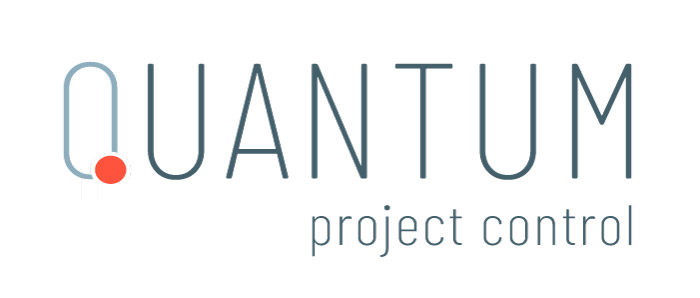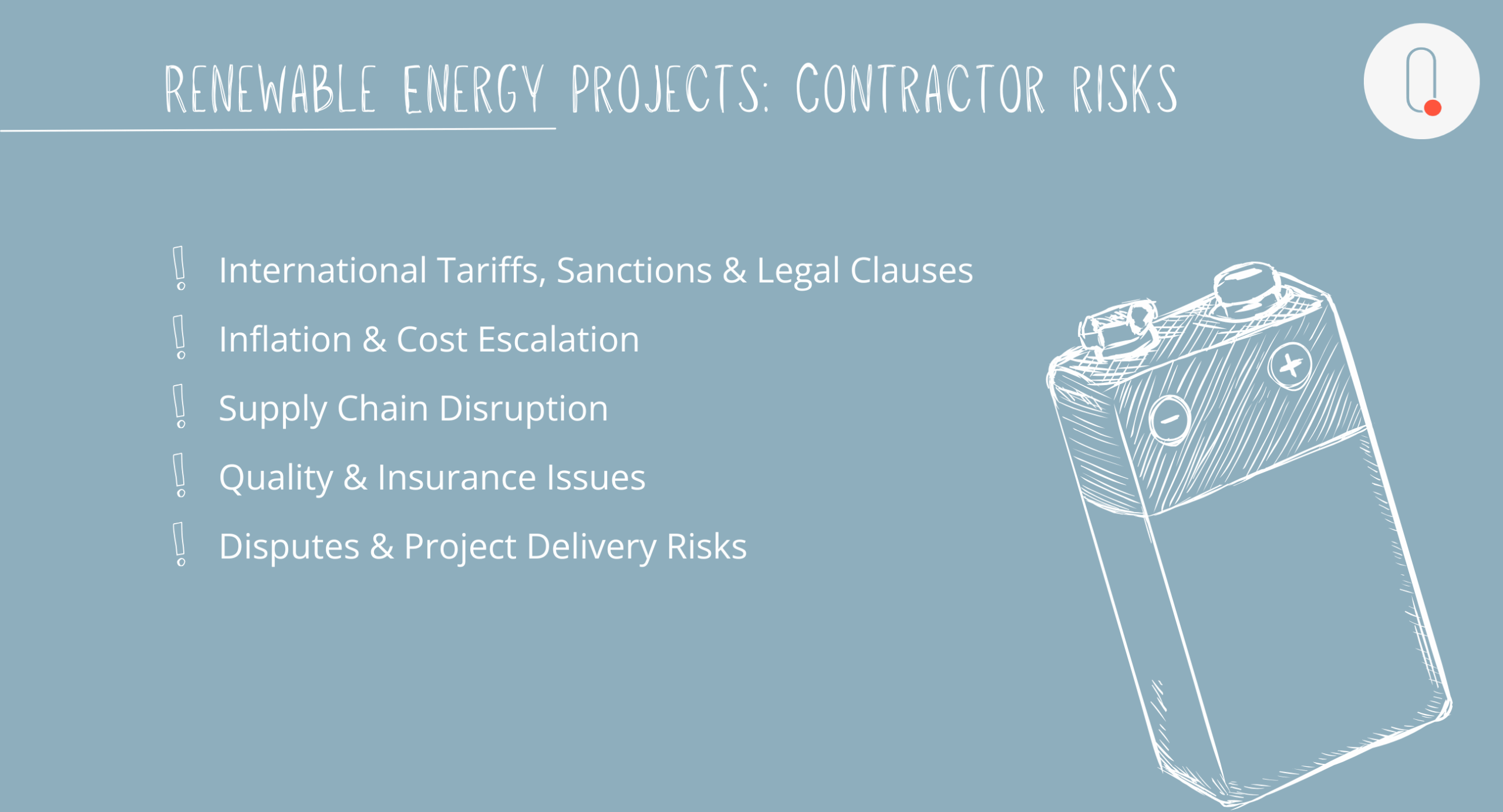As the renewable energy sector expands rapidly across the UK and globally, contractors are facing a shifting risk landscape — shaped by volatile tariffs, supply chain constraints, and evolving contractual expectations. Following a recent workshop on risk mitigation and dispute management in renewables, here are five key areas contractors must be alert to in 2025, along with practical steps to stay ahead.
1. Tariffs, Sanctions & Legal Clauses: Don’t Get Caught Out by International Risk
With the rise of cross-border sanctions (e.g. Russia), tariffs, and trade restrictions, traditional “change in law” and “force majeure” clauses are no longer fit for purpose in many EPC and subcontract arrangements. Many contracts still only account for legal changes within the project country, ignoring the global nature of renewables supply chains.
Contractor actions
- Review and update your standard change in law clauses to include supply chain impacts and third-country regulations.
- Widen force majeure definitions to explicitly capture import/export restrictions, sanctions, and severe trade disruption.
- Ensure contractual risk sharing for unforeseen global impacts is discussed at tender stage.
2. Inflation & Cost Escalation: Protecting Viability in a High-Pressure Market
Lump-sum contracts are increasingly risky in a market where equipment and labour costs are unpredictable. Contractors are often locked into pricing agreed 12–24 months before actual procurement, with few mechanisms to recover cost increases.
Contractor actions
- Negotiate price escalation clauses in all contracts exceeding 12 months in duration.
- Where escalation clauses are not accepted, consider indexed pricing structures or provisional sums to allow for future adjustments.
- Flag unsustainable pricing strategies during tender evaluation — especially if competitors are underpricing to win.
3. Supply Chain Disruption: Getting Ahead of Delays and Local Content Risks
Solar and wind supply chains continue to face volatility. Whether it’s turbine slot availability, factory shutdowns in China, or long-lead items delayed at ports, delivery delays are common — and local content requirements are making procurement even harder.
Contractor actions
- Where Letters of Intent (LOIs) are used, ensure they are properly drafted with clear terms, risk allocation, and pricing assumptions.
- Flag local content rules early in project planning, and document challenges in meeting them to avoid breach claims.
- Engage suppliers and fabricators early, particularly for offshore components and wind farm assets.
4. Quality & Insurance: Bridging the Gaps in Coverage and Performance
Recurring defects in offshore welding, coating, and pre-manufactured component connections are becoming more prevalent. At the same time, insurance policies are often misunderstood — especially around delayed startup and loss-of-income cover.
Contractor actions
- Use SCADA data during commissioning and DLP to monitor potential defects and performance issues.
- Work with clients to review insurance language carefully — many policies only trigger with direct physical damage.
- Ensure your QA processes consider the risk of defect replication (e.g. same defect across 60 turbines).
Need support with risk management or contract administration?
We are currently helping contractors stay commercially protected while delivering complex projects. Speak to us about how we can help you on your project.
5. Disputes & Project Delivery: Aligning Risk with Reality
Common disputes continue to arise around survey delays, grid connection, incomplete approvals, and performance shortfalls. In many cases, contractors commit to projects before key approvals are secured, or inherit unrealistic timelines from the employer.
Contractor actions
- Advocate for a two-stage contracting model, where the contractor is engaged early for design and approvals before full EPC terms are finalised.
- Track employer-side risks (e.g. grid slot timing, incomplete surveys) and document their impact clearly.
- Push back on attempts to agree full EPC terms during pre-FEED or early concept stages.
Proactive Risk Management is the Best Defence
While arbitration and adjudication remain the main routes for formal dispute resolution in renewables, the most effective strategy is early engagement and clarity. With more projects run via SPVs and external finance, the ability to “cross-settle” across multiple projects is disappearing — making clean, well-documented contracts even more critical.
Contractors must be proactive, both commercially and legally, to protect their delivery margins and avoid becoming the last party holding the risk.
Disclaimer
Quantum Project Control is not a law firm and does not provide legal advice. This article is for general information purposes only and should not be relied upon as legal advice. For guidance on specific issues, please consult a qualified legal professional.


